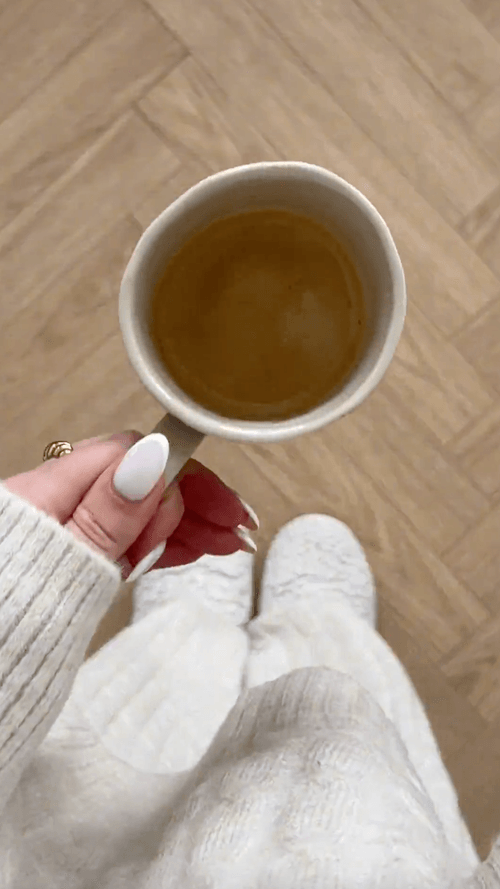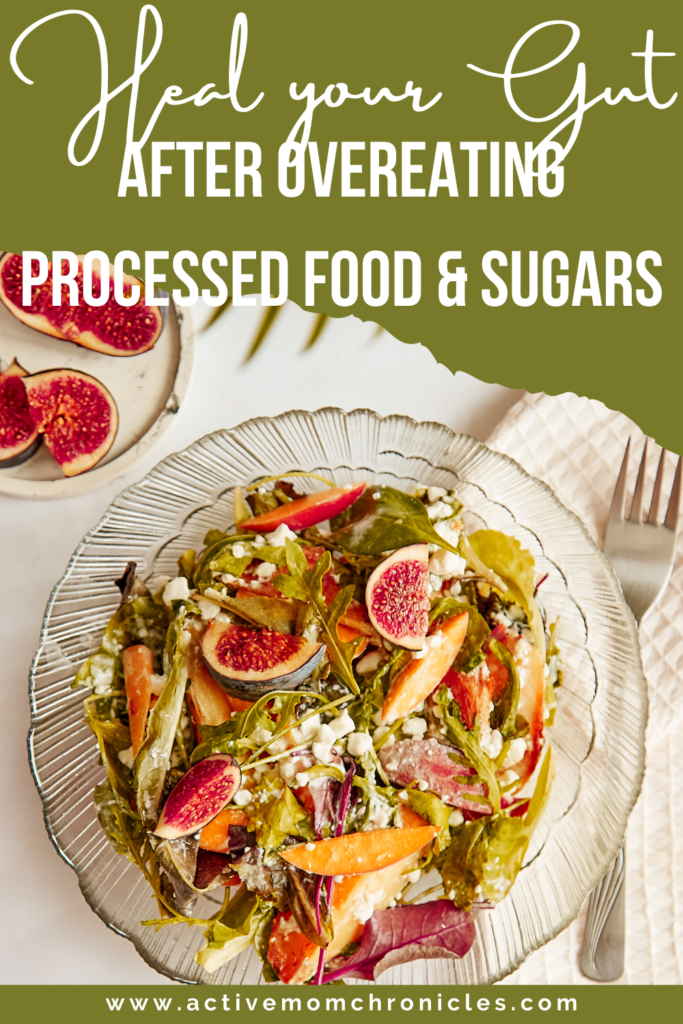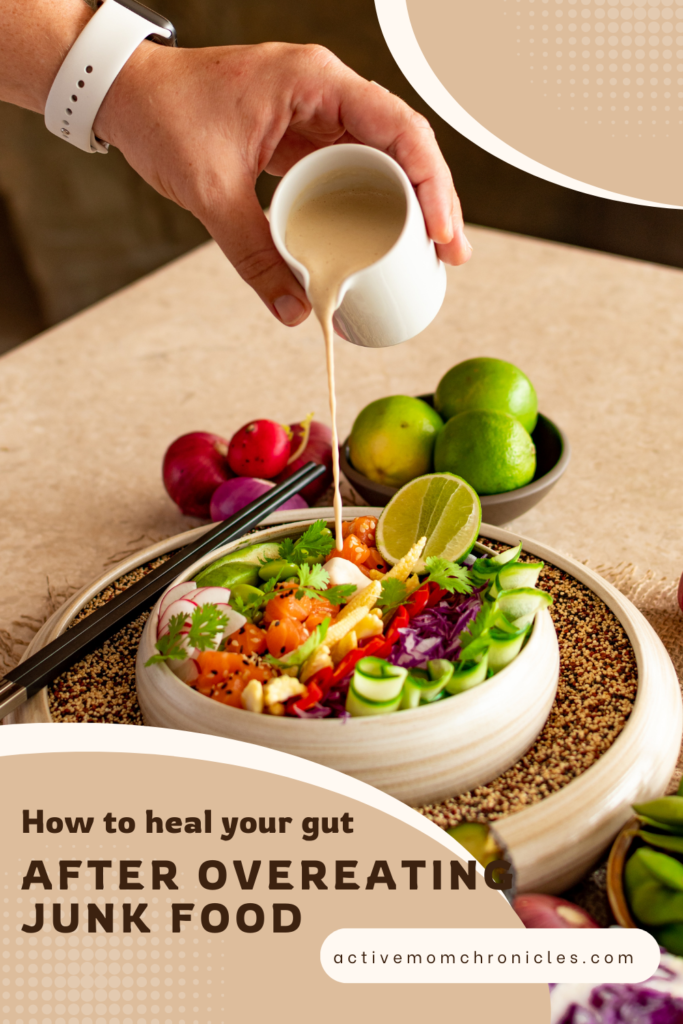If you’ve been indulging in too many processed foods and sugary treats, you might be feeling bloated, sluggish, or dealing with digestive discomfort. This happens to me once every few weeks either when I go on vacation, around holidays or around particularly stressful phases of life. When it does, I go back to the basics.
Our gut health plays a major role in overall well-being and has an impact on digestion, metabolism, immunity and our mood (second brain right?). But a rest is easy by focusing on nutrition and lifestyle by going back to the basics. I hope this blog post helps you out if you are in need of a reset.

Signs Your Gut Needs Healing
Overconsumption of processed foods and sugar can disrupt the balance of good and bad bacteria in your gut, leading to:
- Bloating and gas
- Irregular bowel movements (constipation or diarrhea)
- Sugar cravings
- Brain fog and fatigue
- Skin breakouts
- Poor immune function
If you’re experiencing any of these, your gut might be calling for a reset!
Step 1: Remove Gut-Damaging Foods
To restore gut balance, start by cutting back on the culprits that cause inflammation and disrupt your microbiome:
Refined Sugar & Artificial Sweeteners – Excess sugar feeds harmful gut bacteria, leading to imbalances. Swap it with natural sweeteners like honey or dates in moderation.
Processed Foods – Packaged foods often contain additives, preservatives, and unhealthy fats that harm gut bacteria. Focus on whole, real foods.
Seed Oils & Trans Fats – Found in fried foods and many processed snacks, these promote inflammation. Use ghee, coconut oil, or olive oil instead.
Alcohol & Excess Caffeine – Both can disrupt digestion and increase gut permeability. Moderation is key!
Step 2: Nourish Your Gut with Healing Foods
Now that you’ve eliminated harmful foods, it’s time to replenish your gut with nourishing, fiber-rich, and probiotic-packed options.
Load Up on Fiber
Fiber feeds good gut bacteria, improving digestion and reducing inflammation. Focus on getting vegetables like spinach, carrots, and bell peppers, fruits like berries (raspberries are a great source of fiber), apples, bananas and whole grains like quinoa, brown rice and oats and legumes like lentils and chickpeas.
Eat More Probiotics and Prebiotics
Probiotics are live bacteria that support gut health. Add fermented foods to your diet. Kimchi, Sauerkraut and yogurt are some great staples to have on hand. I love indulging in Kombucha every now and then too. Be sure to find low sugar options.
Prebiotics feed probiotics, helping them thrive. Best sources include garlic (pro tip: cut the garlic and leave it out for 10 minutes before consuming for maximum benefits), onions, bananas and asparagus.
Prioritize Protein for Gut Repair
Protein helps rebuild gut lining, especially after inflammation. If you spent even sometime online, you know that protein is the super macro and has many benefits. Anyone and everyone recommends eating protein so this has other benefits too.
Step 3: Hydrate & Detox Naturally
Water helps flush toxins and aids digestion. The general rule is to drink one ounce of water for every 2 pounds of body weight. I find that being well hydrated and eating adequate protein each meals really goes a long way to aid my sugar cravings.
You can also add lemon water to support liver detox, peppermint or ginger tea for a soothing effect and coconut water for natural electrolytes.

Step 4: Manage Stress & Improve Sleep
Your gut and brain are connected, meaning stress and poor sleep can worsen gut issues. When I am stressed or busy then my self-control goes out of the window too. So it is essential to manage stress not just for recovery but also to be support a healthy lifestyle in general.
There is a tone of research on the gut brain connection through the vagus nerve and how to reset to reduce cortisol. In general adding a medication practice or incorporating breathing techniques are very helpful.
Along side this, getting 7-9 hours of quality sleep aids in providing the rest that your digestion system needs.
Research has shown that spending time outside and walking are great for stress reduction and improving gut function.

Step 5: Slowly Reintroduce Healthy Carbs & Treats
Once your gut starts feeling better, you don’t have to eliminate all treats forever! Choose natural, whole-food sources of carbs and sweets like sweet potatoes instead of white bread, dark chocolate (70%+ cacao) instead of candy, fresh fruit instead of sugary desserts
How Long Should You Follow This Plan?
You should follow this gut-healing plan for at least 4 to 6 weeks to allow your gut microbiome to rebalance and your digestive system to repair itself before adding some amount of foods that compromise your gut bacteria back.
Once your gut feels balanced, you can gradually reintroduce foods in moderation, like occasional treats, while maintaining a fiber-rich, probiotic-friendly diet. Long-term gut health is about balance, not restriction!
Breakdown of the Healing Timeline
 Week 1-2: Reduced bloating, better digestion, fewer cravings
Week 1-2: Reduced bloating, better digestion, fewer cravings
 Week 3-4: Improved energy levels, clearer skin, more regular bowel movements
Week 3-4: Improved energy levels, clearer skin, more regular bowel movements
 Week 5-6: Stronger gut microbiome, reduced inflammation, better overall well-being
Week 5-6: Stronger gut microbiome, reduced inflammation, better overall well-being
Sample 4-Week Gut-Healing Meal Plan

Here’s a simple, easy-to-follow meal plan to help you stay on track.
Week 1-2: Gut Reset Phase
- Breakfast: Greek yogurt with berries, flaxseeds, and a drizzle of honey
- Lunch: Quinoa with grilled chicken, sautéed spinach, and turmeric yogurt dressing
- Dinner: Lentil soup with garlic-roasted vegetables and brown rice
- Snack: Handful of walnuts and a green smoothie (banana, spinach, and ginger)
Week 3-4: Gut Repair & Strengthening
- Breakfast: Oatmeal with chia seeds, cinnamon, and banana
- Lunch: Chickpea and cucumber salad with lemon-tahini dressing
- Dinner: Grilled salmon with steamed broccoli and quinoa
- Snack: Hummus with carrot and cucumber sticks
Final Thoughts: Be Patient & Stay Consistent
Healing your gut takes time, but small, consistent changes will make a huge impact. Focus on whole, nutrient-dense foods, stay hydrated, manage stress, and listen to your body. Your gut will thank you with better digestion, more energy, and fewer cravings!






Leave a Reply